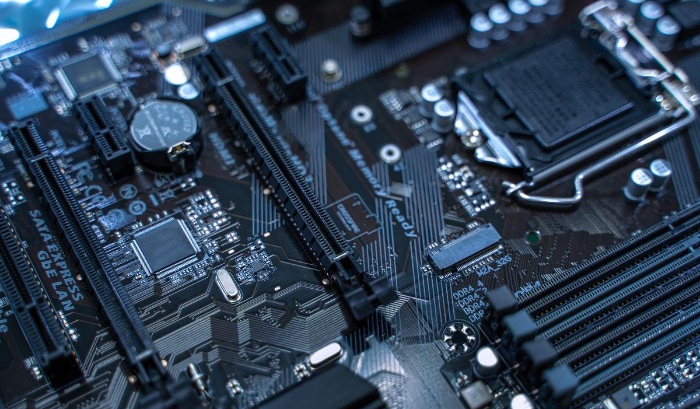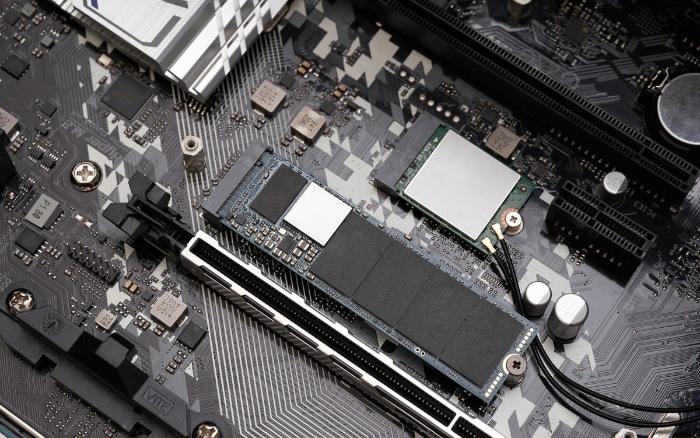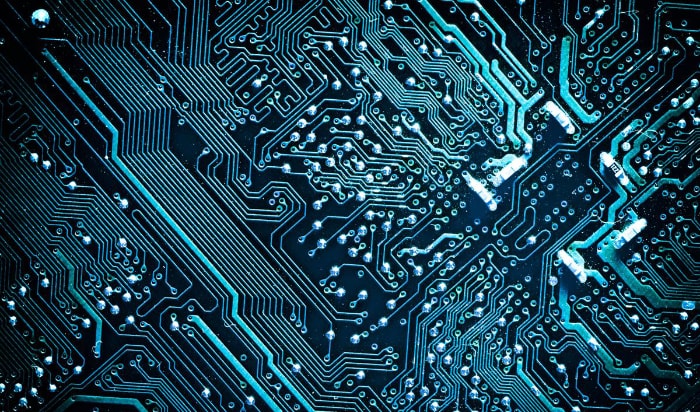Is Your Motherboard Fried? Signs to Look For

Your computer suddenly shuts down, refuses to boot up, or behaves erratically—these are scenarios that can trigger immediate concern. A reliable computer system is often taken for granted until something goes wrong, leaving you perplexed and anxious about the underlying issue.
While various components could be at fault, the motherboard serves as the heart of your computer. When it fails, the impact can be significant, crippling your entire system.
Common Reasons Why Motherboards Fail
Motherboards are robust pieces of hardware designed to last for several years, but like all electronic components, they are not immune to failure. Understanding why a motherboard may fail can be crucial for both preventive measures and effective troubleshooting.
Exposure to Static Electricity
Static electricity can cause irreparable damage to the sensitive circuits on a motherboard. While many believe this only happens during installation, static discharge can occur at any time if you're not careful.
For instance, touching the motherboard without grounding yourself can transfer a static charge that may fry certain components. It is always best to handle motherboards and other internal components in an anti-static environment.
Overheating
Heat is the enemy of electronic components, and the motherboard is no exception. Overheating can occur due to inadequate cooling, blocked air vents, or a failing cooling system.
Excessive heat can warp the motherboard and cause internal components like transistors and capacitors to degrade over time. Regularly monitoring system temperatures and ensuring that all fans and heatsinks are functioning properly can go a long way in preventing this issue.
Poor Power Supply
An unreliable or failing power supply unit (PSU) can wreak havoc on your motherboard. Voltage fluctuations, spikes, or sudden power losses can lead to data corruption and may also damage the motherboard's circuits.
Always ensure that your power supply is of good quality and provides the right voltage and current ratings for your system.
Manufacturing Defects
Sometimes the motherboard may come with inherent manufacturing defects that are not immediately obvious. These defects can include micro-fractures in the circuits, faulty solder joints, or poor-quality components.
While quality control procedures aim to catch these issues, some may slip through the cracks. Manufacturing defects generally manifest themselves soon after you begin using the new hardware.
Accidental Physical Damage
Physical force applied to the motherboard, such as dropping, bending, or improperly inserting/removing components, can cause damage. This can result in cracked circuits or broken connectors that may be visible upon close inspection.
Therefore, always exercise caution and follow manufacturer guidelines when working with your motherboard.
Early Warning Signs of a Deteriorating Motherboard

Recognizing the early warning signs of a failing motherboard can save you from unexpected system failures and data loss. In this context, being proactive rather than reactive can make a significant difference.
Random System Crashes or Reboots
Frequent system crashes or unexpected reboots are often a telltale sign of a motherboard beginning to fail. While software issues can cause these problems too, if you've ruled them out, the motherboard is likely the culprit.
Such erratic behavior can disrupt your workflow and can lead to potential data loss if not addressed promptly.
USB or Other Peripheral Devices Malfunctioning
If your USB ports, keyboard, mouse, or other peripheral devices start malfunctioning, it might not just be an issue with those external devices. In many instances, these issues can stem from a deteriorating motherboard that is struggling to manage the data flow between the CPU and these peripherals.
BIOS Issues, Including Failure to Post
A computer’s BIOS (Basic Input/Output System) is stored on a chip on the motherboard. If you are encountering issues accessing the BIOS, or if the system fails to pass the Power-On Self-Test (POST), it could signify motherboard failure.
Inconsistent BIOS behavior or settings that reset without your intervention are indicators worth noting.
Inexplicable System Behavior
Unusual system behavior such as screen freezes, appearance of strange lines on the display, or even auditory signals like beeping sounds can signal a deteriorating motherboard. These phenomena are often the result of communication errors between the motherboard and other hardware components, which become increasingly frequent as the motherboard begins to fail.
Declining System Performance Over Time
It may be an early warning sign if you notice a gradual decline in system performance, characterized by slow application loading, lag in system response, or increased system noise. While these issues can be due to other factors such as malware or failing storage drives, a consistent degradation often points toward motherboard issues.
How to Diagnose a Potentially Fried Motherboard
Once you've noticed signs of a potentially failing motherboard, the next logical step is to diagnose the problem accurately. Proper diagnosis can help you determine whether the motherboard is indeed at fault, and if so, what remedial measures can be taken.
Physical Inspection
A careful physical inspection is one of the first steps in diagnosing a motherboard issue. Look for obvious signs of damage such as burn marks or blown capacitors. Capacitors should be flat on the top.
If they appear bulging or leaking, that's a sign of failure. Check also for any discolored areas or traces of smoke, as these can be indicators of short circuits or burnt components.
Diagnostic Software
There are specialized software tools designed to test the health of motherboards and other hardware components. Programs like HWMonitor or CPU-Z can provide real-time statistics on your system's internals.
If the software is unable to retrieve data from the motherboard or shows inconsistent readings, that could signify a problem.
Component Swapping
If feasible, swapping out components like RAM, the CPU, or video cards can help isolate the issue. Replace the suspected faulty components with ones that are known to be in good working condition.
If the system starts behaving normally after the swap, you can fairly conclude that the motherboard is not at fault.
Running a POST (Power-On Self-Test)
Performing a POST can offer valuable insights into the health of a motherboard. When you boot up the system, listen for a beep code and watch for any LED indicators on the motherboard itself.
The patterns and sequences can be referenced against your motherboard’s manual to interpret what they mean. No beep or LED activity often implies that the motherboard is failing to initiate the POST, which is a strong indicator of failure.
Motherboard Error Codes
Some advanced motherboards come equipped with a small display that shows error codes. These codes are invaluable for pinpointing the exact issue with your motherboard. Refer to the motherboard’s manual for the meaning of these codes. Absence of any code or a code indicating motherboard failure clearly specifies the problem.
The Difference Between Repairable and Non-Repairable Issues

Once you've diagnosed the state of your motherboard, the next critical decision involves determining whether the issue can be repaired or if you'll need to replace the motherboard entirely. Distinguishing between repairable and non-repairable problems can be the key to cost-effective and efficient resolution.
Circumstances Under Which a Motherboard Can Be Repaired
- BIOS Update: Sometimes, issues arise due to outdated BIOS software. In such cases, updating to the latest BIOS version can resolve the problems.
- Reseating Components: Loose components can result in improper connections, leading to system failures. Reseating RAM, graphics cards, and other peripherals may solve the problem.
- Cleaning: Accumulation of dust can cause overheating, leading to component failure. Regular cleaning can often fix this issue.
- Soldering: In some cases, poor soldering can lead to circuit disruptions. With the right expertise, these issues can be fixed by re-soldering the joints.
- Power Supply Replacement: If the power supply is at fault for inconsistent voltages, replacing it can sometimes fix issues with the motherboard.
Situations That Warrant Motherboard Replacement
- Severe Physical Damage: Visible cracks, broken connectors, or burn marks are generally non-repairable and necessitate motherboard replacement.
- Outdated Hardware: Sometimes, it's not about repair but obsolescence. Older motherboards may not support newer hardware components, making an upgrade inevitable.
- Multiple Component Failures: When multiple areas of the motherboard fail simultaneously, repair is often not cost-effective compared to replacing the entire unit.
- Unidentifiable Issues: In cases where issues persist despite exhaustive diagnosis and attempted repairs, it may be more practical to replace the motherboard.
- Degradation Over Time: Wear and tear is natural for any electronic component. Once a motherboard reaches the end of its lifecycle, it becomes more susceptible to multiple points of failure, making replacement the more sensible option.
Steps to Take After Confirming a Fried Motherboard
If the unfortunate reality sets in that your motherboard is indeed fried, immediate action is crucial to prevent further damage and data loss.
Backup Data Immediately
If you haven't already backed up your data, and the system is still somewhat operational, make it your first priority. Utilize external storage solutions like USB drives or cloud storage to secure important files.
In cases where the system won't boot, you might need to take out the storage drive and connect it to another computer to recover the data.
Determine Warranty Status
Check if your motherboard is still under warranty. If it is, contact the manufacturer or the retailer where you purchased the motherboard.
A warranty claim can often save you significant money, as manufacturers usually offer free repairs or replacements for defective units within the warranty period.
Make the Decision: Repair or Replace
Based on your diagnosis and the advice in the previous section, make the critical decision of whether to repair or replace your fried motherboard. If you're not well-versed in hardware repair, it might be wise to consult with professionals before taking any action.
Remove the Damaged Motherboard
Before removing the damaged motherboard, it's important to discharge any static electricity by grounding yourself. Turn off the power supply, unplug all the connections, and then carefully remove the motherboard from the case.
Keep screws and other small parts in a safe place for potential future use.
Install the New or Repaired Motherboard
If you opted for repair and your motherboard is returned in working condition, or if you've purchased a new motherboard, the installation process is next. Follow the manufacturer's guidelines for installing the motherboard and reconnecting all the components.
Ensure that all screws are securely tightened and that all cables are properly connected.
Reinstall or Update Software
With the new or repaired motherboard in place, you might need to reinstall your operating system or update your drivers. This step ensures that your system recognizes the new hardware and functions optimally.
Conclusion
Identifying and addressing a fried motherboard can be a daunting task, especially given the central role this component plays in a computer's functionality. Early detection, thorough diagnosis, and judicious decision-making regarding repair or replacement are pivotal steps in managing this unfortunate scenario.
Whether it's recognizing the warning signs of a deteriorating motherboard, utilizing diagnostic software, or knowing when to call it quits and replace the entire unit, being informed and proactive can make the process less stressful and more efficient.


